READY TO GET STARTED?
REQUEST A FREE ESTIMATE
Fill out the form below or call (888) 466-7849 for a free, no-obligation estimate.
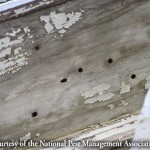
Carpenter Bee Damage Source: NPMA
There’s been a lot of buzz (pun intended) on our blog about carpenter bees and termites. It’s termite season so we always want to keep our readers aware of the potential risks and damage that termites can cause. And carpenter bees are our Pest of the Month for the month of April. Both of these wood-boring pests should be taken seriously due to the great amount of damage that they can cause.
Carpenter bees eat through soft woods where they make their nests and lay their eggs inside the tunnels. This can cause damage to decks, eaves, porches, or even support beams in your home. Luckily, they are rarely a threat to humans. Males don’t have stingers but do tend to be aggressive toward other bees, animals, or humans that are near their nests. The female carpenter bee has a stinger but rarely uses it.
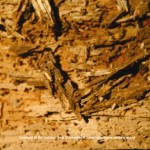
Termite Damage Source: NPMA
Termites (March’s Pest of the Month) are working 24/7 to find food…and unfortunately for us, their food is typically the wood that was used to build our homes. Without termite protection, your home could be at risk for severe damage. Termites are responsible for more than $2 of damage to homes in the US each year. Like carpenter bees, termites often leave a trail of wood that can serve as a tell-tale sign that they are there.
Whether you have carpenter bees or termites, you should contact a licensed pest professional. Not only will they be able to correctly identify the insect but they will be able to develop a customized plan that is specific to your home and your situation. By doing this, you are ensuring that the problem is diagnosed correctly, that the correct product, if any, is being used correctly and safely, and that proper steps are taken to ensure that the issue does not reoccur. Northwest Exterminating and our highly trained pest professionals will be glad to come to your home and do a free inspection of your home. Just give us a call at 888.466.7849 or visit us at www.callnorthwest.com
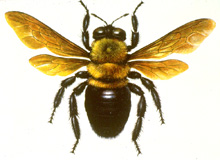 Carpenter bees are often mistake for bumble bees because of their similarity in size and color.
Carpenter bees are often mistake for bumble bees because of their similarity in size and color.
For more information on carpenter bees you can visit our PEST ID page or call Northwest Exterminating at 888.466.7849.
Northwest Exterminating recently added another tool to our website that will benefit business and homeowners. The 2013 Pest Calendar is available for printing and download on our site. Each month we highlight a particular pest that is often seen at that time of the year. Along with a visual reference, we offer some little known facts about the pest.
We cover squirrels, cockroaches, termites, carpenter bees, mosquitoes, bed bugs, fire ants, fleas/ticks, stink bugs/kudzu bugs, spiders, rats, and raccoons.
We hope this will serve as a useful tool to our customers and those that visit our site at www.callnorthwest.com
Go to our website and check out our 2013 Pest Calendar!
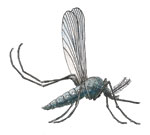 The early spring has brought pests out in full force and we suspect that they will not be slowing down anytime soon. Not only are bugs annoying but they’re a health concern as well.
The early spring has brought pests out in full force and we suspect that they will not be slowing down anytime soon. Not only are bugs annoying but they’re a health concern as well.
Pests can carry diseases and cause areas to be unsanitary. These are issues of concern for both homes and businesses. Even the cleanest homes can have bug problems in an environment like this. Carpenter bees, mosquitoes, ants, yellow jackets, silverfish, and other pests have recently been invading properties. If you’re in the Atlanta, Columbus, Savannah, or Nashville area, call Northwest Exterminating. Our NorPest Green program was developed exclusively by Northwest Exterminating to get rid of pests using the lowest environmental impact possible. A Northwest representative will develop a customized plan to target those pests while maintaining the health of your home.
We are strategically placed throughout Georgia and Tennessee to service all areas of Georgia as well as parts of Tennessee, Alabama, and South Carolina. Visit us online or call 888.466.7849 to find the location nearest you.
Spring is here and so are the pests. We’ve talked a lot about the unusually warm weather leading to higher numbers of pest sightings and our Ask the Mouse section on our website has been a great place for readers to ask questions about pests they are seeing. Mosquitoes, bed bugs, and carpenter bees are among some of the common household pests that are being seen this spring. Take a look below at some of our most common recent questions.
Why do mosquitoes bite some people more than others?
 Mosquitoes are attracted to carbon dioxide and can sense it from up to 30 yards away. Researchers are still trying to find out exactly what it is that makes some people more attractive than others. Research has indicated that the amount of carbon dioxide in the breath, pregnancy, body temperature, alcohol and odorant markers based on blood type are the top attractants. Pregnant women are preferable because they exhale more carbon dioxide and tend to run a little warmer than the average person. It is also thought that alcohol increases body heat making a person more appealing. So be careful who you hang around at the next cook out.
Mosquitoes are attracted to carbon dioxide and can sense it from up to 30 yards away. Researchers are still trying to find out exactly what it is that makes some people more attractive than others. Research has indicated that the amount of carbon dioxide in the breath, pregnancy, body temperature, alcohol and odorant markers based on blood type are the top attractants. Pregnant women are preferable because they exhale more carbon dioxide and tend to run a little warmer than the average person. It is also thought that alcohol increases body heat making a person more appealing. So be careful who you hang around at the next cook out.
My son’s coming home from college. What do I need to do to make sure he doesn’t bring home bed bugs?
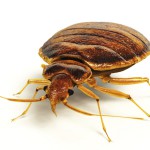 Bed bugs are evasive and hard to detect. When your son brings home his clothes, make sure to leave them outside, in a detached building or in the garage. Immediately place the dirty clothes in the washing machine and dry them on high for at least 10 minutes. It is best to keep the luggage out of the house if possible. If you don’t have that option you can place the luggage in black plastic bags and leave them outside in the sun on a hot day. You can also do this with furniture. Bed bugs won’t tolerate temperatures greater than 120 degrees. Since bed bugs are tiny and can get into the smallest cracks, it is best to have a professional to inspect furniture and other items before you bring them into your house.
Bed bugs are evasive and hard to detect. When your son brings home his clothes, make sure to leave them outside, in a detached building or in the garage. Immediately place the dirty clothes in the washing machine and dry them on high for at least 10 minutes. It is best to keep the luggage out of the house if possible. If you don’t have that option you can place the luggage in black plastic bags and leave them outside in the sun on a hot day. You can also do this with furniture. Bed bugs won’t tolerate temperatures greater than 120 degrees. Since bed bugs are tiny and can get into the smallest cracks, it is best to have a professional to inspect furniture and other items before you bring them into your house.
I found sawdust on my back porch. Does that mean I have termites?
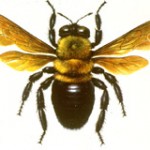 Termites eat the cellulose part of the wood and don’t leave behind sawdust. Chances are you have a different pest, one of the most common is the carpenter bees. Carpenter bees get their name because they excavate clean round entrance holes, close to ½ inch wide, into soft wood such as pine, cedar, cypress and fir. The prefer to attack structural timbers and other wood products such as fascia boards, porch ceilings, decks, railings, siding, shutters, firewood, and other weathered wood. They tend to avoid wood that is well painted or covered in bark. They do not eat the wood therefore they leave behind the sawdust. They bore into wood to make galleries for nesting. If left untreated, they can cause extensive damage.
Termites eat the cellulose part of the wood and don’t leave behind sawdust. Chances are you have a different pest, one of the most common is the carpenter bees. Carpenter bees get their name because they excavate clean round entrance holes, close to ½ inch wide, into soft wood such as pine, cedar, cypress and fir. The prefer to attack structural timbers and other wood products such as fascia boards, porch ceilings, decks, railings, siding, shutters, firewood, and other weathered wood. They tend to avoid wood that is well painted or covered in bark. They do not eat the wood therefore they leave behind the sawdust. They bore into wood to make galleries for nesting. If left untreated, they can cause extensive damage.
What other questions do you have for Northwest Exterminating’s Ask The Mouse section?
Have you seen mosquitoes, bed bugs, carpenter bees, or other pests in or around your home?